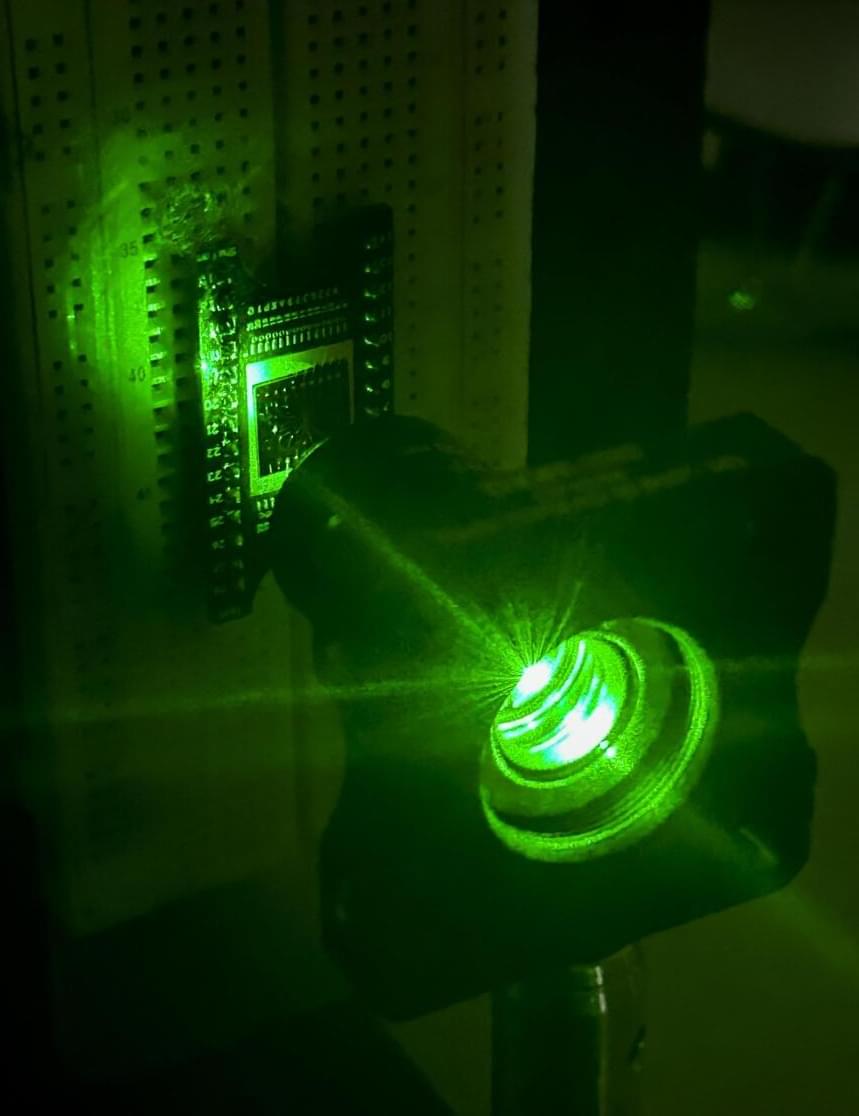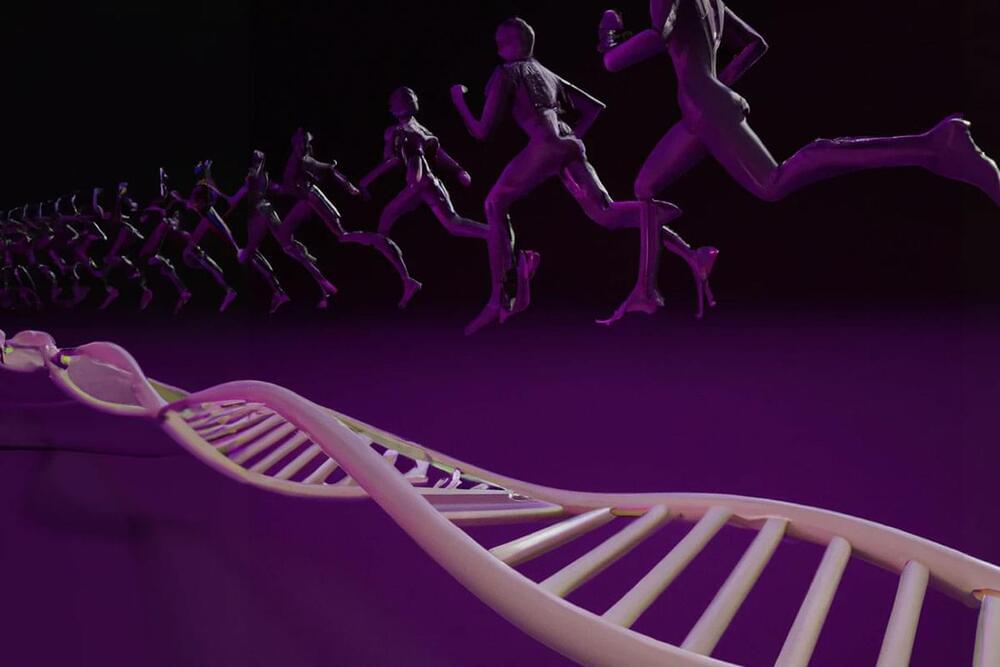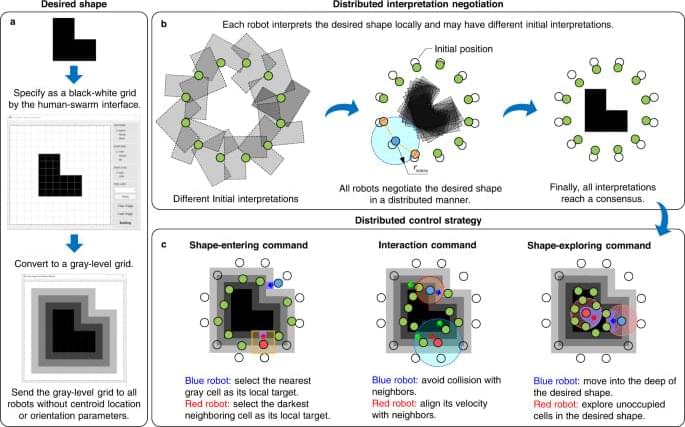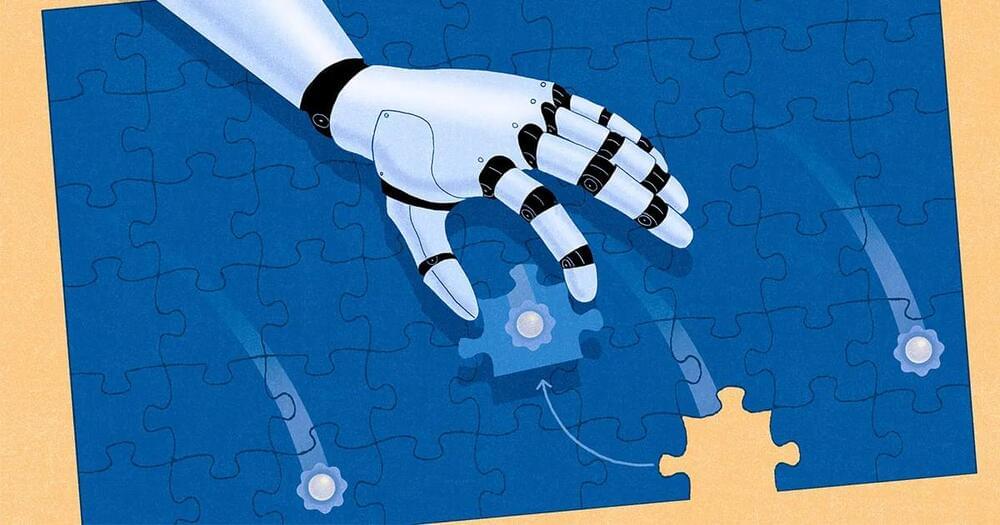The technology can help cut through buzzwordy “solutions” and serve as a shortcut for jumpstarting creativity.


Fibonacci numbers are seen in the natural structures of various plants, such as the florets in sunflower heads, areoles on cacti stems, and scales in pine cones. [HackerBox] has developed a Fibonacci Spiral LED Badge to bring this natural phenomenon to your electronics.
To position each of the 64 addressable LEDs within the PCB layout, [HackerBox] computed the polar (r,θ) coordinates in a spreadsheet according to the Vogel model and then converted them to rectangular (x, y) coordinates. A little more math translates the points “off origin” into the center of the PCB space and scale them out to keep the first two 5 mm LEDs from overlapping. Finally, the LED coordinates were pasted into the KiCad PCB design file.
An RP2040 microcontroller controls the show, and a switch on the badge selects power between USB and three AA batteries and a DC/DC boost converter. The PCB also features two capacitive touch pads. [HackerBox] has published the KiCad files for the badge, and the CircuitPython firmware is shared with the project. If C/C++ is more your preference, the RP2040 MCU can also be programmed using the Arduino IDE.


Researchers have created a small device that “sees” and creates memories in a similar way to humans, in a promising step towards one day having applications that can make rapid, complex decisions such as in self-driving cars.
The neuromorphic invention is a single chip enabled by a sensing element, doped indium oxide, that’s thousands of times thinner than a human hair and requires no external parts to operate.
RMIT University engineers in Australia led the work, with contributions from researchers at Deakin University and the University of Melbourne.

Type 2 diabetes is a significant global health concern, affecting millions of individuals worldwide. The disease is associated with numerous complications, as well as an increased risk of premature mortality. Recent research conducted by the University of Sydney has shed light on the potential of physical activity in preventing the onset of type 2 diabetes, even in individuals with a high genetic risk for the disease [1]. This study underscores the importance of exercise as a key strategy for chronic disease prevention and offers promising news for individuals seeking to reduce their risk of developing type 2 diabetes.
Longevity. Technology: The worldwide burden of type 2 diabetes is substantial, and the disease carries significant implications for public health. Type 2 diabetes is associated with various complications, including cardiovascular diseases, kidney problems and nerve damage. Moreover, individuals with type 2 diabetes often experience a shortened lifespan and reduced healthspan due to the increased risk of developing other chronic conditions. The study’s findings add to the clarion call for effective prevention strategies that alleviate this burden on individuals, families and healthcare systems worldwide.
The research, published in the British Journal of Sports Medicine, involved 59,325 adults enrolled in the UK Biobank project. Participants wore accelerometers on their wrists to measure their physical activity levels and the researchers also considered genetic markers associated with a higher risk of type 2 diabetes. The study followed the participants for up to seven years to assess their health outcomes.

The fascinating collective behaviors of biological systems have inspired extensive studies on shape assembly of robot swarms6,7,8,9. One class of strategies widely studied in the literature are based on goal assignment in either centralized or distributed ways10,11,12. Once a swarm of robots are assigned unique goal locations in a desired shape, the consequent task is simply to plan collision-free trajectories for the robots to reach their goal locations10 or conduct distributed formation control based on locally sensed information6,13,14. It is notable that centralized goal assignment is inefficient to support large-scale swarms since the computational complexity increases rapidly as the number of robots increases15,16. Moreover, when robots fail to function normally, additional algorithms for fault-tolerant detection and goal re-assignment are required to handle such situations17. As a comparison, distributed goal assignment can support large-scale swarms by decomposing the centralized assignment into multiple local ones11,12. It also exhibits better robustness to robot faults. However, since distributed goal assignments are based on locally sensed information, conflicts among local assignments are inevitable and must be resolved by sophisticated algorithms such as local task swapping11,12.
Another class of strategies for shape assembly that have also attracted extensive research attention are free of goal assignment18,19,20,21. For instance, the method proposed in ref. 18 can assemble complex shapes using thousands of homogeneous robots. An interesting feature of this method is that it does not rely on external global positioning systems. Instead, it establishes a local positioning system based on a small number of pre-localized seed robots. As a consequence of the local positioning system, the proposed edge-following control method requires that only the robots on the edge of a swarm can move while those inside must stay stationary. The method in ref. 19 can generate swarm shapes spontaneously from a reaction-diffusion network similar to embryogenesis in nature. However, this method is not able to generate user-specified shapes precisely. The method in ref. 21 can aggregate robots on the frontier of shapes based on saliency detection. The user-defined shape is specified by a digital light projector. An interesting feature of this method is that it does not require centralized edge detectors. Instead, edge detection is realized in a distributed manner by fusing the beliefs of a robot with its neighbors. However, since the robots cannot self-localize themselves relative to the desired shape, they make use of random walks to search for the edges, which would lead to random trajectories. Another class of methods that do not require goal assignment is based on artificial potential fields22,23,24,25. One limitation of this class of methods is that robots may easily get trapped in local minima, making it difficult to assemble nonconvex complex shapes.
Here, we propose a strategy for shape assembly of robot swarms based on the idea of mean-shift exploration: when a robot is surrounded by neighboring robots and unoccupied locations, it would actively give up its current location by exploring the highest density of nearby unoccupied locations in the desired shape. This idea does not rely on goal assignment. It is realized by adapting the mean-shift algorithm26,27,28, which is an optimization technique widely used in machine learning for locating the maxima of a density function. Moreover, a distributed negotiation mechanism is designed to allow robots to negotiate the final desired shape with their neighbors in a distributed manner. This negotiation mechanism enables the swarm to maneuver while maintaining a desired shape based on a small number of informed robots. The proposed strategy empowers robot swarms to assemble nonconvex complex shapes with strong adaptability and high efficiency, as verified by numerical simulation results and real-world experiments with swarms of 50 ground robots. The strategy can be adapted to generate interesting behaviors including shape regeneration, cooperative cargo transportation, and complex environment exploration.

Summary: Researchers developed one of the most comprehensive 3D models of the synapse, the neuron juncture crucial for intercellular communication. This breakthrough allows an unprecedented view of the complex interactions between individual cells at the synapse, offering fresh insights into neurodegenerative diseases such as Huntington’s disease and schizophrenia.
The team used this novel approach to compare healthy mice brains to those with the Huntington’s mutant gene, revealing structural flaws potentially disrupting cellular communication. The researchers believe this technique could significantly advance our understanding of various neurodegenerative and neuropsychiatric diseases.
Join us on Patreon! https://www.patreon.com/MichaelLustgartenPhD
Discount Links:
NAD+ Quantification: https://www.jinfiniti.com/intracellular-nad-test/
Use Code: ConquerAging At Checkout.
Epigenetic Testing: https://trudiagnostic.com/?irclickid=U-s3Ii2r7xyIU-LSYLyQdQ6…M0&irgwc=1
Use Code: CONQUERAGING
At-Home Blood Testing: https://getquantify.io/mlustgarten.
Oral Microbiome: https://www.bristlehealth.com/?ref=michaellustgarten.
Enter Code: ConquerAging.
Green Tea: https://www.ochaandco.com/?ref=conqueraging.


The aim of non-pharmacologic interventions for brain health is to preserve cognitive function and safeguard brain structure. This review explores various diets (MeDi, DASH, MIND, ketogenic), exercise approaches (endurance, resistance, yoga, HIIT), and highlights the need for further research to uncover the underlying mechanisms.